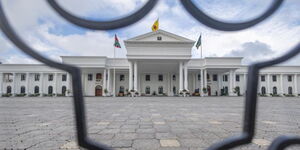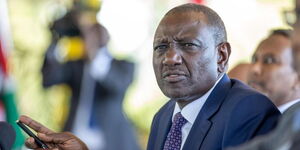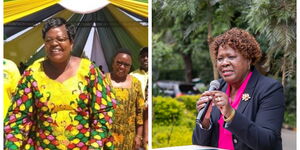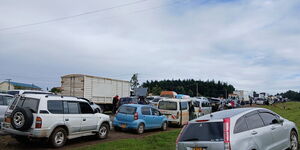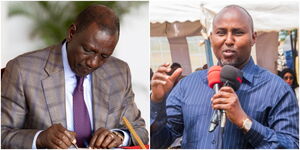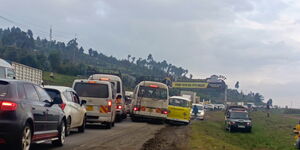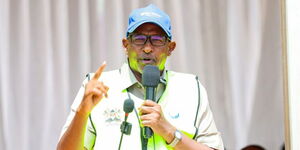Kenya Pipeline Corporation (KPC) in a letter addressed to Petroleum principal secretary Andrew Kamau, has warned of a looming fuel shortage.
KPC's Managing Director Macharia Irungu attributed the impending crisis to the government's failure to remit funds appropriated for fuel subsidies.
He as well lamented that marketers are on a go slow as they declined to pick consignments at Kipevu Oil Storage Facility and other storage areas thus causing delays in transportation and clearance of cargo.
The cargo's piling up at oil terminals, Irungu wrote, blocks other imported consignments from being received.
In a letter authored by the MD, most depots in Nairobi and parts of Western Kenya were said to have run out of stock - warning that the situation could culminate in fuel shortage in the above-mentioned areas.
“As you are aware, diesel being the carrier product of all other grades in the pipelines is the most affected with the daily average uplift volume dropping from 11,500 cubic metres to 9,000 cubic metres, marking a 30 per cent drop,” the MD wrote.
“Going by the diesel uplifts witnessed in Western Kenya, we are likely to stock out on petrol in Western Kenya from September 8 as its receipt is being hindered by the leading AGO batches,” he adds.
The delayed clearance of cargo at the country's major storage facilities is a recipe for a fresh fuel crisis in the country. This crisis, according to the pipeline corporation will affect both the delivery of fuel and the prices.
This comes barely five months after the government moved to alleviate a fuel shortage crisis that had plagued Kenyans for over two weeks in April.
Kenyans in most places were faced with acute fuel shortages which disrupted transport activities. Oil marketers were accused of hoarding fuel at the expense of the millions of Kenyans who were affected.
On their part, the marketers claimed that the government had failed to disburse subsidy funds hence exposing them to the risk of incurring losses. The government engaged oil marketers in the country and committed to paying the arrears owed to marketers.
EPRA is the body mandated to regulate fuel prices in Kenya. The authority sets prices which the marketers have to conform to in a bid to standardize prices and prevent extortion.
The fixed prices are, however, affected by external factors including the current fuel shortage that has plagued the world markets. Thus, the government enacts subsidies to cushion local traders from the increased prices which would in turn be extended to motorists.
The situation could shift from bad to worse, taking into consideration an advisory by the International Monetary Fund (IMF) requiring Kenya to suspend fuel subsidies by October 2022. This was one of the conditions given by the multinational lender to ensure Kenya pays back the Ksh200 billion loan.
For the period between August 15 and September 15, prices of Super Petrol, Diesel and Kerosene traded at Kshs.159.12, Kshs.140.00 and Kshs.127.94 per litre respectively in Nairobi.
EPRA will issue new prices for the period of October 14 to November 15 on Wednesday, September 2022.

